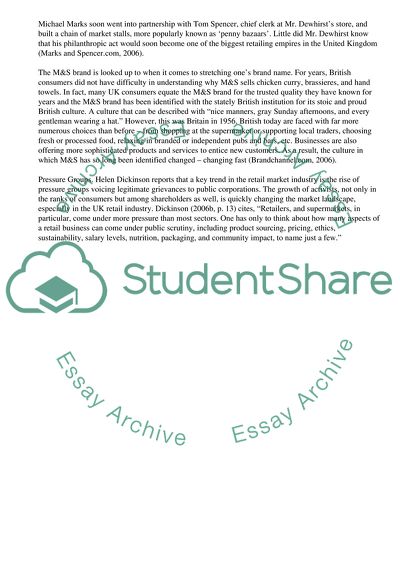Cite this document
(Marks And Spencer: Strategies for Sustaining Competitive Advantage Case Study Example | Topics and Well Written Essays - 2750 words, n.d.)
Marks And Spencer: Strategies for Sustaining Competitive Advantage Case Study Example | Topics and Well Written Essays - 2750 words. https://studentshare.org/business/1706262-corporate-strategy-essay
Marks And Spencer: Strategies for Sustaining Competitive Advantage Case Study Example | Topics and Well Written Essays - 2750 words. https://studentshare.org/business/1706262-corporate-strategy-essay
(Marks And Spencer: Strategies for Sustaining Competitive Advantage Case Study Example | Topics and Well Written Essays - 2750 Words)
Marks And Spencer: Strategies for Sustaining Competitive Advantage Case Study Example | Topics and Well Written Essays - 2750 Words. https://studentshare.org/business/1706262-corporate-strategy-essay.
Marks And Spencer: Strategies for Sustaining Competitive Advantage Case Study Example | Topics and Well Written Essays - 2750 Words. https://studentshare.org/business/1706262-corporate-strategy-essay.
“Marks And Spencer: Strategies for Sustaining Competitive Advantage Case Study Example | Topics and Well Written Essays - 2750 Words”. https://studentshare.org/business/1706262-corporate-strategy-essay.


